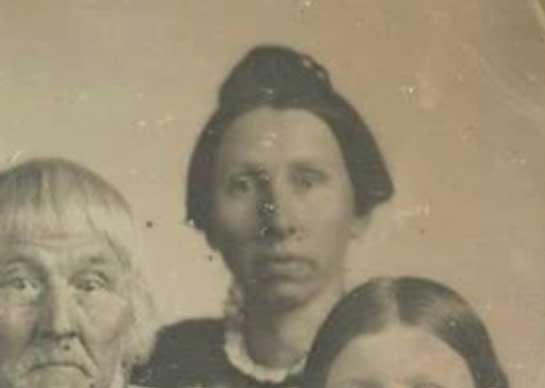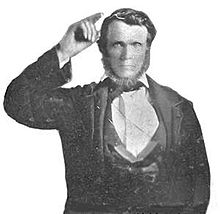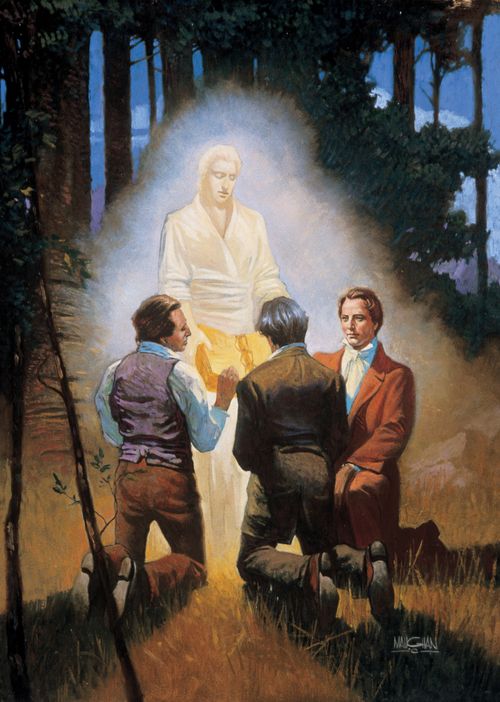Overview of the Missouri Years

Move to Missouri
The Latter-Day Saints, led by the Prophet Joseph Smith, lived and used Kirtland Ohio as the Headquarters of the Church, for seven years. While in Kirtland, the Prophet Joseph Smith received revelations informing the Saints they would not stay permanently in Ohio. The Lord told the Saints that there is another place prepared for them, Missouri.
In the middle of July in 1831, Joseph received revelation recorded in Doctrine and Covenants 52, stating that Joseph Smith, Sidney Rigdon, and others should travel to Missouri where the next church conference would be held. The Lord also promised the Saints would know the land “which I will consecrate unto my people.”
The Prophet, Joseph Smith, arrived in Jackson County Missouri in July 1831. Only a couple days after arriving the prophet received revelation D&C 57, when the Lord declared Missouri to be the land of promise stating “Wherefore, this is the land of promise, and the place for the city of Zion.” The Lord also taught them: “Behold, the place which is now called Independence is the center place; and a spot for the temple is lying westward, upon a lot which is not far from the courthouse.”
The Saints were very excited about the revelations of the location of Zion. Feeling like they were preparing the world for the second coming of Christ, and the members were thrilled to think they would be on Earth for this wonderful event. Many, after hearing the revelations given to Joseph Smith, started to move to Jackson County Missouri.
Dedicating the Land of Missouri
On August 2, 1831 Sidney Rigdon dedicated the land of Kaw Township for the gathering of the Saints. The people got to work right away preparing the land for the Saints to gather. On the same day as the revelation they laid the foundation of the first building. The foundation was for the first school/church house. There is a monument in that location today, the Troost Monument.
The next day the Prophet Joseph Smith traveled to Independence and dedicated the Temple site, in Doctrine and Covenants 57:3, and the Church held it’s first conference in Missouri in the home of Joshua Lewis a member living in the area.
Within only a couple years many members of The Church of Jesus Christ of Latter-Day Saints moved to Missouri, even though the headquarters of the Church was still located in Kirtland Ohio. By the year 1833 there were about 1,200 members in Jackson County.
With so many members of the Church moving to Jackson County, this made the original residence anxious, thinking their rights and lands would be taken up by the members of The Church of Jesus Christ of Latter-Day Saints. Tensions continually rose between the members and non-members in Jackson County.
The tensions eventually escalated to physical conflicts. On July 20, 1833 the Missouri Mob gathered and demanded the members of the Church leave Jackson County. The mob told the Saints that if they would leave then would not hurt them, or their property if they all agreed to leave. The Saints would not agree to the terms set by the mob, and this resulted in the printing press of W.W. Phelps being ransacked, and their beloved bishop, Bishop Partridge and Charles Allen being tarred and feathered in Independence Square.
Seeking Help in Missouri
The Saints could not believe that the mob was allowed to rule the towns they were living in. The members sought out legal help to stop the mob. They found a man name Alexander W. Doniphan, who was not a member of the Church but was sympathetic to the cause of the Latter-Day Saints and agreed to be the legal council for the Church.
Turns out, the mob did not like the idea of the Latter-Day Saints getting a lawyer and the persecution of the Saints escalated. The Saints in the Whitmer branch had their homes destroyed and their lives threatened by the mob. The mob said they were going to tear down the gristmill, and they ransacked the Gilbert and Whitney Store.
On October 31, 1833 the Missouri mob unroofed and partially destroyed ten houses of member of the Church in the Big Blue River Township. They took Latter-Day Saints men and whipped them. On November 4 the Missouri mob men started destroying houses along the Big Blue River. The Latter-Day Saint men started defending themselves and a war broke out between the two sides. The war is referred to as “Battle of the Big Blue.” Men on both sides died, two mob men and one Latter-Day Saint died in the battle.
Disarming the Saints in Missouri
False rumors of Latter-Day Saints attacking Missourians spread like wild fire. The Governor Dunklin gave instructions that both sides of the conflict should surrender their guns. Many of the Latter-Day Saints, believing the Governor would help them, surrendered their guns, but the Missouri mob did not. This put the members of the Church in a venerable situation. The next day, knowing the Latter-Day Saints didn’t have guns to retaliate, the mob drove the Latter-Day Saints out of their homes. Within a few weeks all the Latter-Day Saints were driven from their homes in Jackson County.
Safety of Clay County
When the Latter-Day Saints were driven from their houses in Jackson County they were not prepared for the cold. They did not have the supplies they needed. Most of the 1,200 people driven from their homes found shelter with their neighbors in Clay County. The people of Clay County were kind to the members of the Church and allowed them to stay in their town. Their homes were mostly wagons, or dugout shelters in hillsides.
Joseph Smith’s Response to Missouri Persecution
Joseph Smith heard what was happening to the Saints and his mother recorded “he bust into tears and sobbed aloud, ‘Oh my brethren! my brethren. . . Would that I had been with you, to have shared your fate.”(Joseph Smith’s Kirtland p.137)
Church leaders hired Alexander Doniphan, to help plead their case. They plead their case to the Governor of Missouri and also President Andrew Jackson (D&C 101:86-88). This is also when Joseph Smith received revelation from the Lord to start Zions Camp.
Moving from Clay County
The Latter-Day Saints told the people of Clay County they did not intend to stay for very long, they were only waiting to get their land and property back from the mobs of Jackson County. It took a lot longer than anticipated and they were never able to get their land and houses back. Luckily with the help of Alexander Doniphan they created two new counties in Missouri for the Latter-Day Saints to live in; Caldwell County and Daviess County. The city of Far West began to grow in Caldwell County, and the Saints were very excited that things were finally seeming to work out.
Far West, Missouri grew quickly by 1838 the area had almost 5,000 people living there. Other areas grew quickly too and they established more communities including: Hauns Mill in Caldwell County, Adam-ondi-Ahman in Davis County and DeWitt in Carroll County.
By the end of the summer of 1838 there were over 10,000 Latter-Day Saints living in Missouri.
Missouri Persecutions increase
The Missouri mob was relentless. They did not give up harassing the Latter-Day Saints. The Saints, at times would resist with force, and the conflict would escalate.
On Election Day 1838 the fight escalated and the time from August to November is referred to as “The Mormon War”.
Governor Lilburn Boggs brought in the state militia to “keep peace”, and the head of the militia was Samuel W. Bogart, who also opposed the Latter-Day Saints. In October the “Battle of Crooked River” occurred and resulted in the deaths of one man in the state militia and three Church members. David Patten, one of the Twelve Apostles, was among the Church members who died.
Governor Boggs issued the infamous “Extermination Order” on October 27, 1838. The Extermination Oder stated that Latter-Day Saints members should be treated as enemies and are to be exterminated or driven from the state. (The Extermination Order was not off the books until 1976!). Three days later the Massacre at Hauns Mill occurred, where 17 Saints were killed and 15 wounded.
The Prophet Joseph Smith and others were arrested and charged with treason. On November 1, the prophet was found guilty and ordered to be shot by firing squad. General Alexander Doniphan refused to obey the order to shoot the prophet and they were taken to Independence, later to Richmond then on to Liberty Jail on December 1, 1838. In April of 1839 the prisoners were allowed to escape.

Leaving Missouri
While the Prophet Joseph Smith was in Liberty Jail the rest of the Latter-Day Saints in Missouri were forced to leave their homes in the middle of winter with few of their belongings. It was the winter of 1838 when Brigham Young led the Saints across the Missouri River into Quincy Illinois, to safety from the Missouri mob-men.
Quincy Illinois
The people of Quincy Illinois helped the displaced Latter-Day Saints. They provided them with temporary shelter along with food and clothings. The people of Quincy Illinois were heaven sent for the Latter-Day Saints.
On April 22, 1839 Joseph Smith and friends, who were arrested, made it to Quincy Illinois and to join their families and the rest of the saints, finally!
The Saints moved to a new area called Commerce, Illinois where they purchased land. On May 10, 1839 the Prophet and his family moved into a small log house on the banks of the Mississippi River. They renamed the city Nauvoo and a new chapter of Church History began.
More Blog Posts:
Fun facts about the Kansas City, Missouri Temple
Troost Park Monument in Kansas City, Missouri
Fun facts about the Kansas City, Missouri Temple
St. Louis Missouri Temple Dedication Healing the Past
Places to Visit:
Independence Visitors Center
Liberty Jail
Far West Temple Site
Adam-ondi-Ahman
Hauns Mill Site
Three Witnesses monument and Pioneer Cemetery
Eight Witnesses monument
Troost Park Marker
References:
https://history.churchofjesuschrist.org/media/70-big-blu-river-1?lang=eng#1
”The LDS Family Travel Guide” by Becky Cardon Smith (Pg. 31-38)









